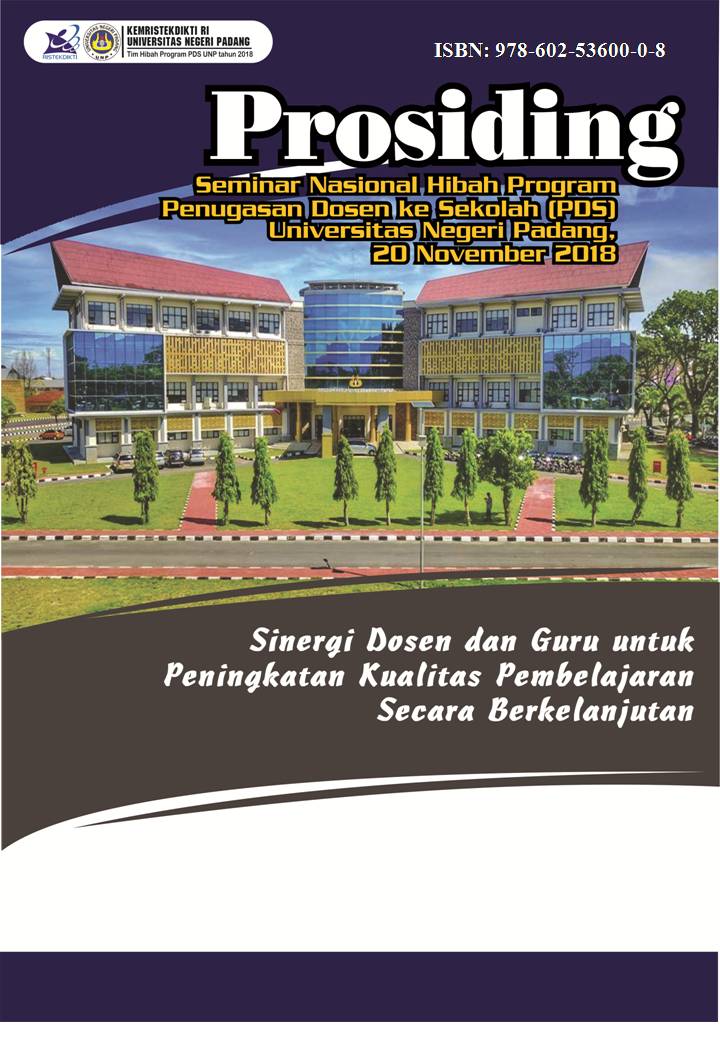Meningkatkan Kemampuan Memahami Teks dengan Menggunakan Model Pembelajaran Scaffolding pada Peserta Didik SMPN 22 Surabaya Tahun Akademik 2018-2019
Abstract
Classroom action research aims to find out how the scaffolding learning model can improve the ability to understand texts. Student’s understanding of the text are very lacking because the teacher does not convey the strategy how to understand the text. The scaffolding learning model can provide assistance individually based on the zone of proximal development (ZPD). The research subjects were the seventh of Surabaya 22 Junior High School class J which consists 34 students. The research begins with giving a pretest whose purpose is to plan the learning process. The pre-test results of students who achieved the Minimum Completion Criteria (KKM) score of 70 from 34 people were only 5 people (30.40%). From the results of the pretest, it becomes the basis for preparing a learning implementation plan (RPP) of narrative (fable) text using the scaffolding learning model. In the first cycle, the implementation phase of the researcher applied the scaffolding learning model, namely: pre-reading, whilst-reading, and post-reading. The next step is observation. At this stage, the researcher as a teacher who applies the model in the teaching and learning process, collaborators are needed to help observe the teacher's activities. After the teaching and learning process is complete, an evaluation is conducted to find out the learning outcomes of students in the first cycle. The last stage is reflection, the results are obtained: 1) the application of the scaffolding learning model in reading learning, students work in work in pairs. 2) Learning outcomes that can reach the KKM score are only 40.76% so the second cycle needs to be done because it has not reached 60% which can reach the KKM score. In the second cycle, the implementation of the model was different, namely the students worked individually. The learning outcomes of students who could reach KKM became 70.82%, there was an increase from the results of the first cycle. The conclusions of classroom action research are: 1) Scaffolding learning model in reading learning helps students to understand the text starting from pre-reading with activities starting from: how to read text with correct pronunciation, find keywords starting from reading skimming texts and scanning, until students fully understand the contents of the text. So that the scaffolding learning model helps students develop critical thinking skills. 2) Scaffolding learning model in reading learning can improve the ability to understand students' texts from 30.40% to 70.82



